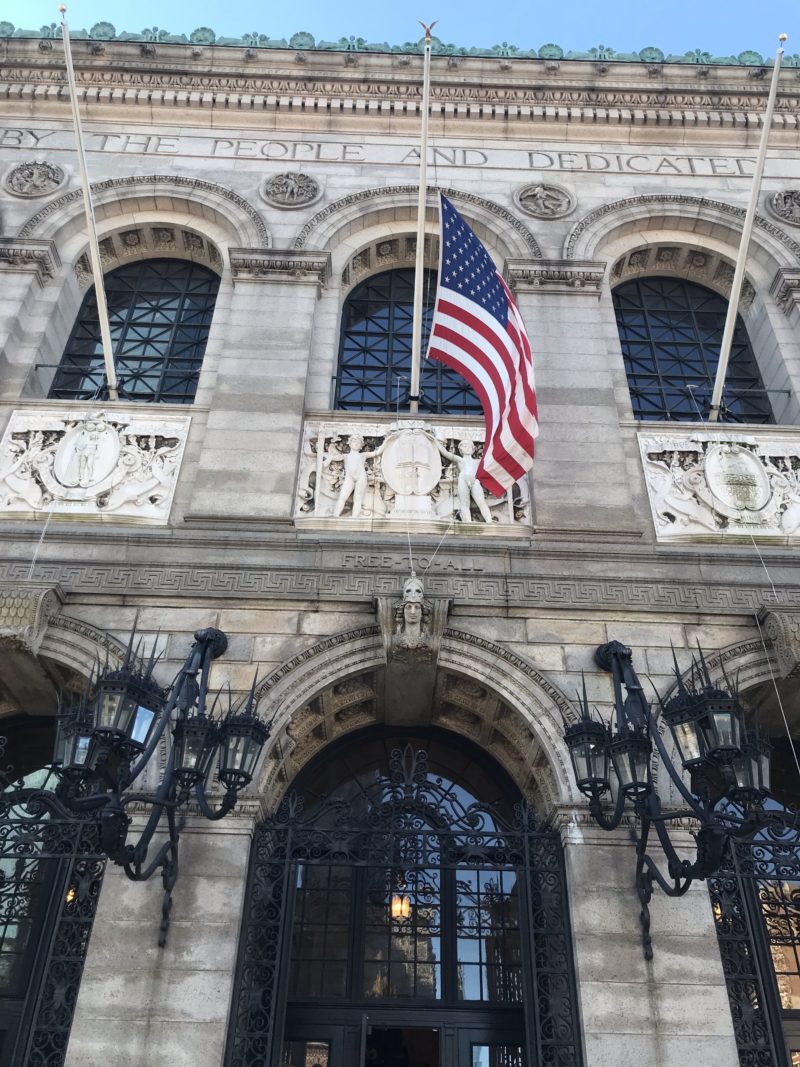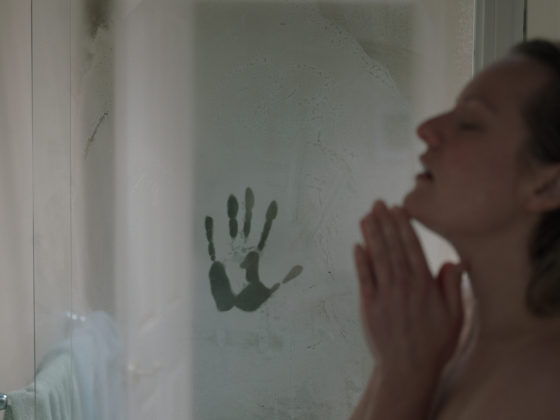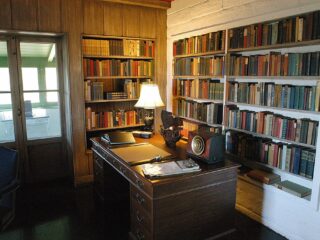By J. Rainey Page
Being from the plains of the Midwest, our family romanticized visiting the Upper Northeast Coast. America’s rugged beginnings would be revealed in old structures and sites, and it didn’t disappoint. The past came to life on our trip to Boston, Massachusetts.
We anticipated the local history, but nothing prepared us for our opulent stay at the Omni Parker House, Boston’s oldest inn and the longest running hotel in all of America.
The Omni Parker House is just off the Freedom Trail, down School Street from the Old South Meeting House. This is where British protests rang stirrings of American freedom, and the Boston Tea Party was plotted, and that event sparked the American Revolution (Old South). Could there be a better place to stay in Boston? I think not.
It was a last minute, winter break trip in December between Christmas and New Year’s. Our daughters wondered why we weren’t in the Bahamas, as our Uber stopped at 60 School Street on that cold, drizzly day.
A bellman greeted us from the umbrella of the Parker House awning and helped us with our luggage. We walked up the narrow, cement steps of the main entrance and down a number of jewel-colored, carpeted stairs into the main foyer. We were transported in time.
A romantic vase of tall flowers on a marble circular table graced the center. We were immersed in warm, wood carved walls and columns with couplets of soft leather chairs and loveseats oriented for conversation. Above the leather couches, framed silhouette artwork faced each other and spoke about days gone by.
We almost missed the check-in desk, as we dewily gazed up at the ornate ceiling. The hotel clerk questioned if we had a room preference. We chattered that we had never been to the hotel or Boston, and she handed us maps and the key to Room 304.
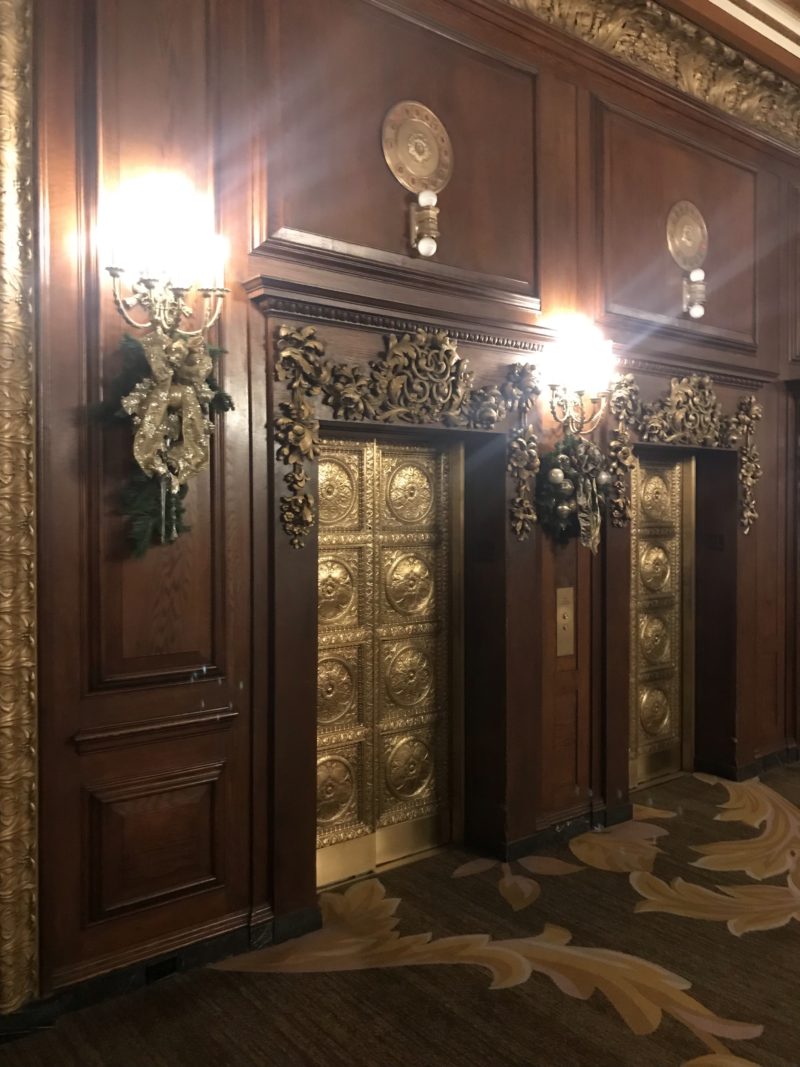
We turned to see 4 shiny, bronze elevator doors with floral design and circular dial above. The dials were numbered to 14 floors, with the missing number 13. I told myself how ordinary to exclude the 13th floor due to the common fear of the number 13, also known as triskaidekaphobia. Our spirited reflections stared back at us as we waited for our elevator.
A number of narrow room doors guided us down the long run of patterned carpet to the far end of the hallway. Room 304 was tucked in a corner with two other rooms.
As we entered our room, we were greeted by our own dynamic images in 2 mirrored sliding closet doors on the right. The room had a cast of natural light with only 2 small windows that were accented by striped valances and exterior rod iron bars. Our room had 2 double beds, and at the foot of the beds, a dresser, full length mirror, and sofa sleeper to house us all.
A narrow door opened to a tiny bathroom. I walked in facing the toilet and small shelf above. To the left, the pedestal sink and to the right, the bathtub. I could only turn in a circle in the heavy wallpapered room. It was rather claustrophobic, but it held the charm of the 19th century ladies powdering their noses before us.
Yes, yesteryear remains here. In the room across the hall, Room 303, its past guest, a struggling businessman, took his own life. After years of guests staying in the room and reporting paranormal activity, it’s now a storage closet. I felt a tinge of sadness each time we rushed passed.
The magic of the Omni Parker House are the past guests. This is only a short list to represent their splendor: model Claudia Schiffer, magician David Copperfield, actor Leonard Nimoy, actress Elizabeth Montgomery, playboy Hugh Hefner, The Grateful Dead, The Who, Muhammad Ali, Bill Clinton, Jimmy Carter, and Gerald Ford (Pohle).
The guests of the more distant past: John F. Kennedy, Jackie Kennedy, and John Wilkes Booth (JFK). Prominent literary guests included Oliver Wendell Holmes Sr., Ralph Waldo Emerson, Henry Wadsworth Longfellow, Mark Twain, Willa Carther, Edith Wharton, and Charles Dickens (Brooks).
Down a set of lobby stairs, we were enchanted by historical artifacts. It is here we experienced the old Parker House: original restaurant menu with prices, dishes, a creamery ledger from 1896, and many newspaper clippings, one of the hotel’s grand opening on October 8, 1855 by a man named Harvey D. Parker.
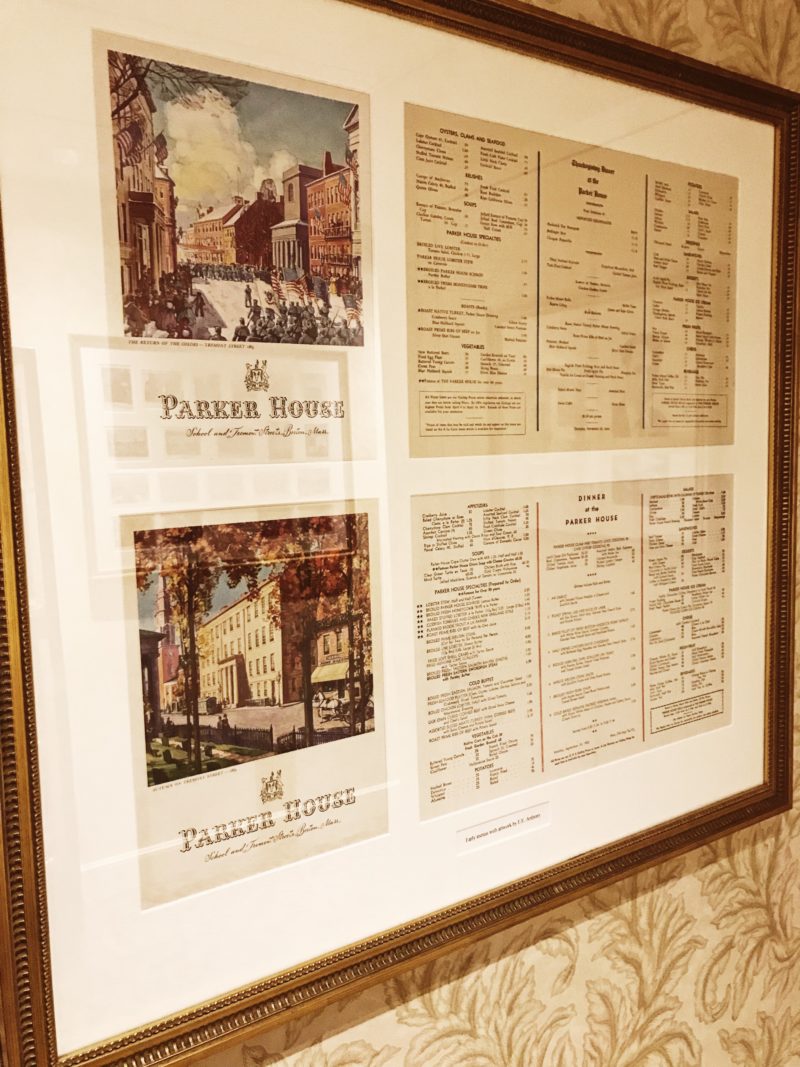
The original hotelkeeper is believed to still roam the oldest part of the hotel on the 10th floor. This portion of the hotel has been open for business the entire time, even during major construction in the 1920s (Brooks).
That first evening, my youngest daughter and I decided to explore. On the 10th floor, shadows joined us down the dark hallway. Closet doors with padlocks were cracked open, but we did not dare jiggle a lock or peek inside. We raced one lap of that floor and returned to the elevator, not seeing another soul.
During our entire stay, we never saw 1 guest come out of any room on the 3rd floor. An elevator is known to stop on this floor for no apparent reason. While we unknowingly stayed on a haunted floor and gradually learned its secrets, we were charmed by the repose of the past guests.
The first morning, we went to Parker’s Restaurant for the breakfast buffet. Frosted, large windows, sparkling chandeliers, and white tablecloths anticipated our arrival. The service was as plush as the upholstered seats.
We were excited to be dining there because the story goes that John F. Kennedy proposed to Jaqueline Bouvier at table 40 in 1953, although some pose to differ. Either way, JFK was a legend at this hotel. His first public speech at age 6 and his announcement of his bid for congress both took place on the premise (JFK). As hopeless romantics, we toasted mimosas to the Kennedys.
In Parker’s Restaurant at the Saturday Club, Charles Dickens performed his first American public reading of A Christmas Carol and Henry Wadsworth Longfellow, his first reading of “Paul Revere’s Ride.”
Only men who typically “preferred a cigar” were allowed to partake in the revelerie. These gentlemen were a distinct group of poets, scientists, and philosophers (Trahan).
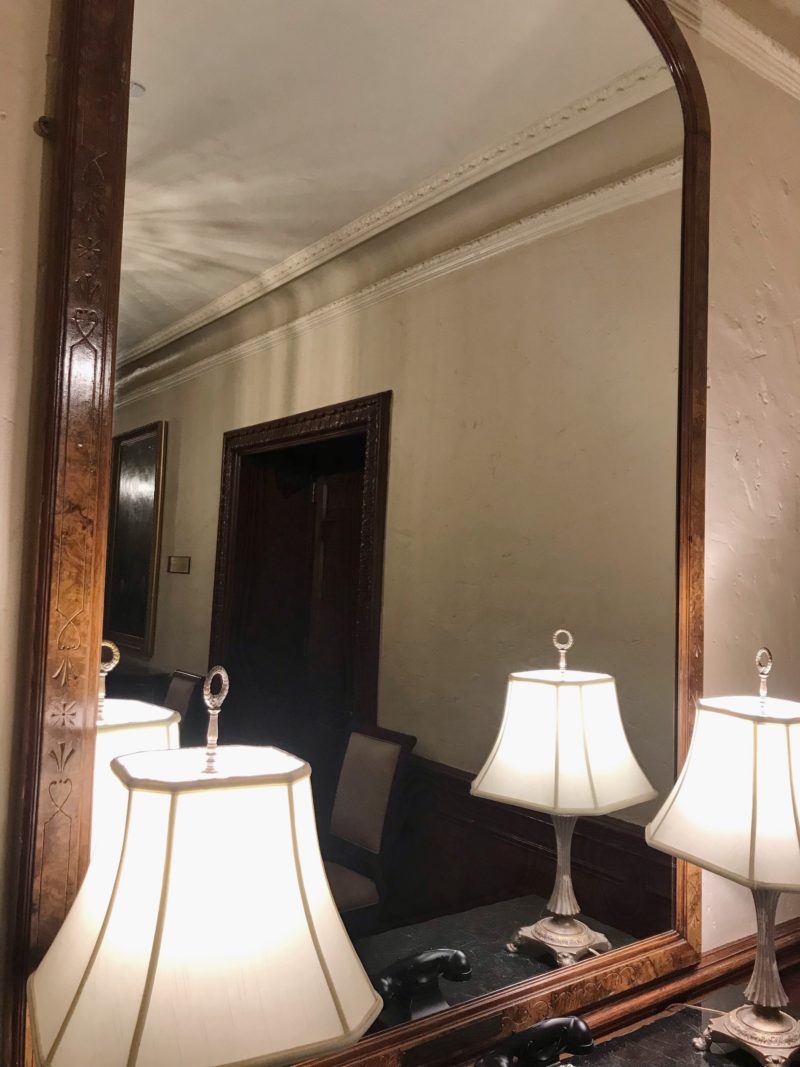 One gentleman, Charles Dickens, still embodies this hotel. A magical door to his 3rd floor suite is found in the lower level. Also from his suite, the mirror that he stared into practicing A Christmas Carol numerous times is found in the elevator bay of the 4th floor. The hotel invites guests to peer inside the glass and see who’s there.
One gentleman, Charles Dickens, still embodies this hotel. A magical door to his 3rd floor suite is found in the lower level. Also from his suite, the mirror that he stared into practicing A Christmas Carol numerous times is found in the elevator bay of the 4th floor. The hotel invites guests to peer inside the glass and see who’s there.
As much as the old Parker House begged us to stay, we left to do the touristy things as first timers. We rode the Boston Hop-On Hop-Off Trolley on a rainy day. We heard the history of charming Beacon Hill, Back Bay, and North End neighborhoods. We revelled in the stories of Paul Revere’s home, Faneuil Hall, and Boston Common.
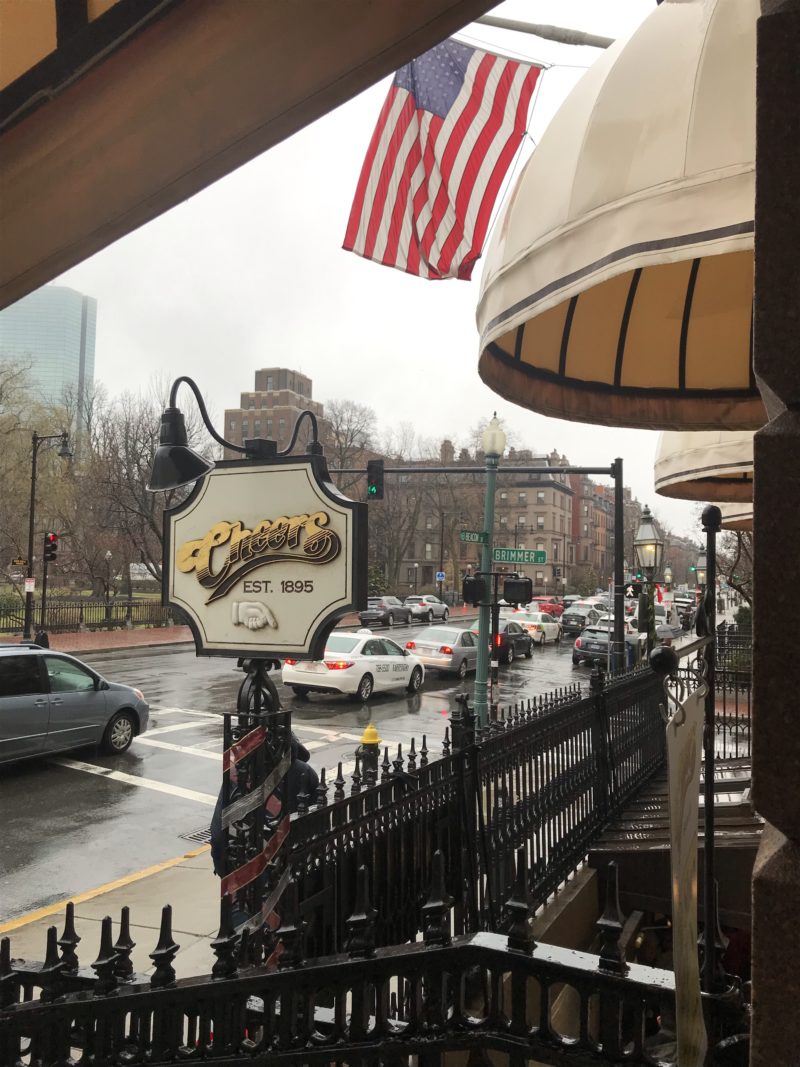
That day, we hopped off for lunch at Cheers on 84 Beacon Street. The teenage daughters rolled their eyes as we remembered Norm, Sam, Diane, Frasier, Lilith, Cliff, Woody, and Carla. We also hopped off to pay tribute to our founding fathers when we toured the USS Constitution, one of the six original warships authorized by President George Washington (USS).
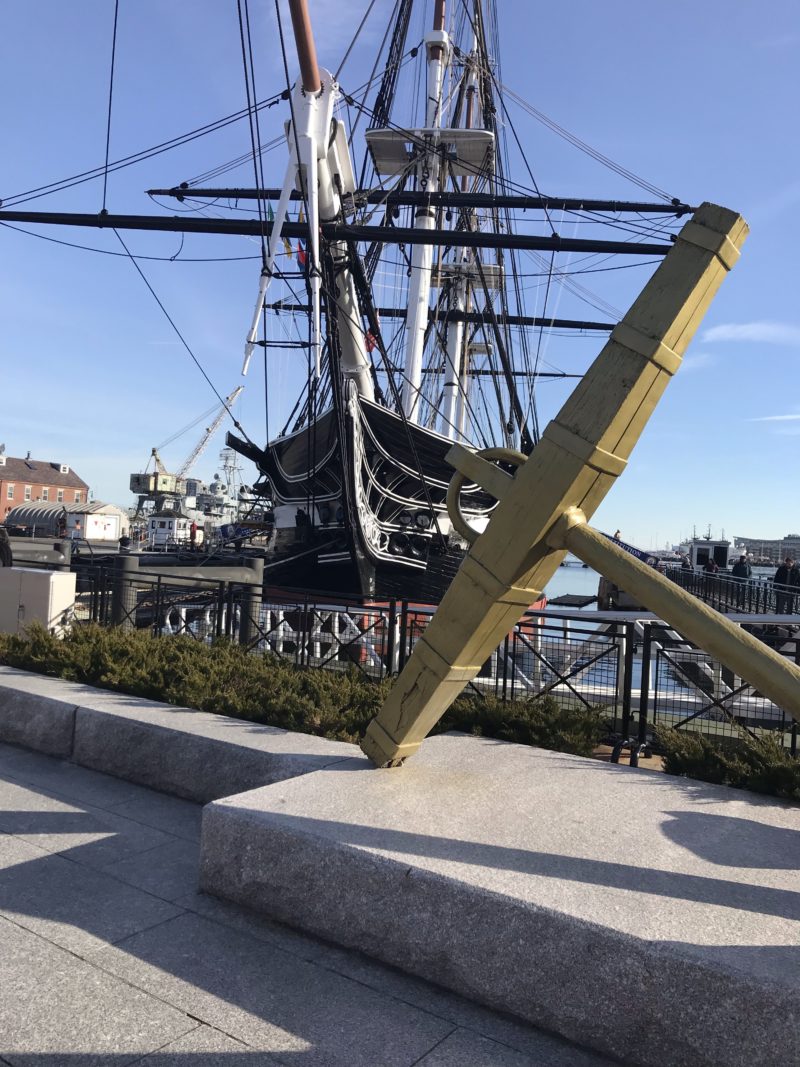
On a different day, we walked the glamour of the impressive art collection at the Isabella Stewart Gardner Museum and lingered in the beautiful silence of the Boston Public Library.
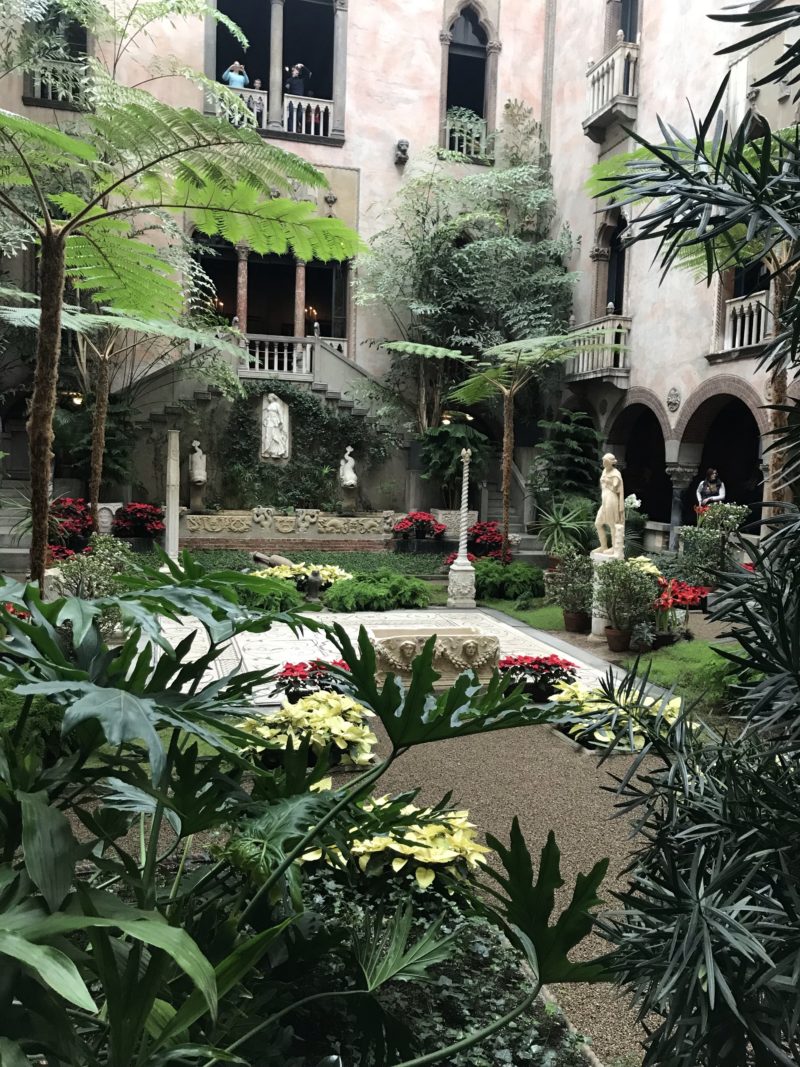
Each time we left to explore, we were always welcomed back. On our last night, after another winding walk, we peered inside large windows displaying a rich mahogany bar. We entered inside The Last Hurrah, the whisky bar at the Omni Parker House. We plunged into the warm, leather seats, knowing there was one thing left to do.
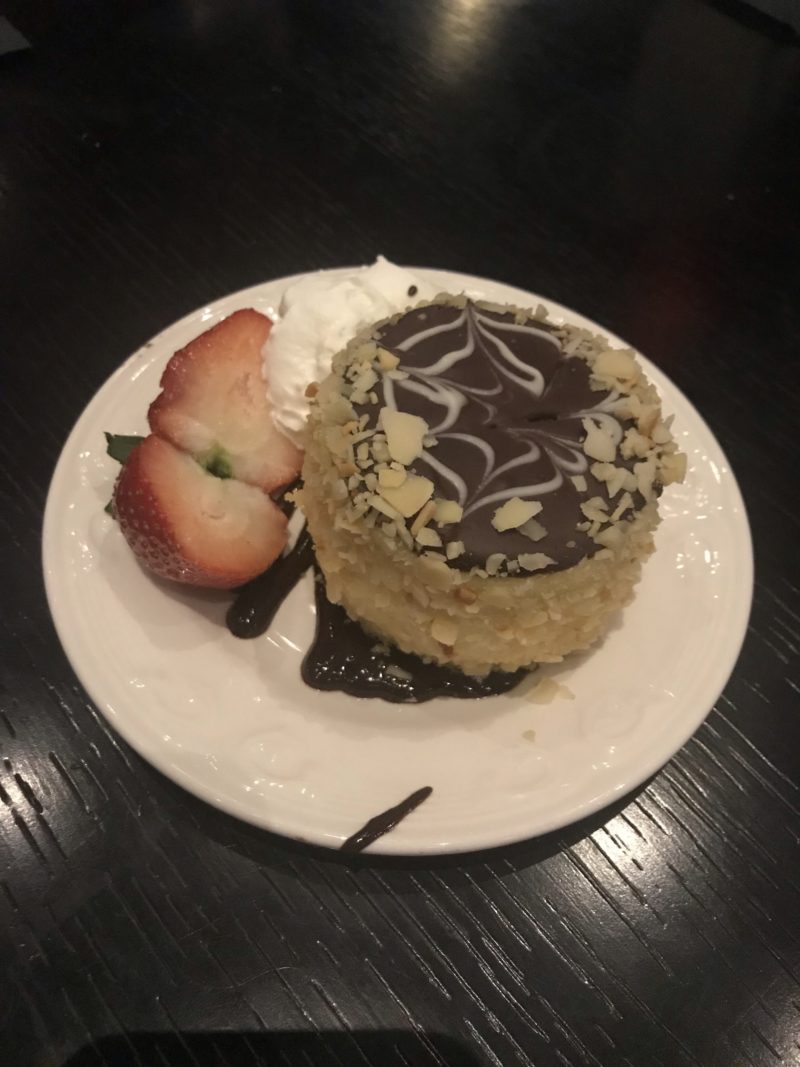
The Boston Cream Pie was invented here in 1856 by the French Chef Sanzian, hired by Mr. Parker who was as passionate about his dining as his hotel (Brooks). Voila’ Boston Cream Pie, nuts, and hot toddies were our last treats of the trip.
Before slipping off to bed, we made a final visit to the sliver of a lobby gift shop down another set of narrow stairs. It was filled with modern Boston paraphernalia, and I bought freedom tea to take home.
We are thrilled and honored to have our family name part of this hotel registry and just maybe our laughter has ebbed its way into the woodwork. The Omni Parker House has a permanent place in our memories for that is what this hotel is made of. “What you are now, we once were; what we are now, you shall be” (Smithfield).
J. Rainey Page is a contributing writer for magazines. Her work has most recently been published in Bella Grace and Focus on the Family. With a Midwestern heart, she studied writing in Winona, Minnesota and currently resides in the Chicago area with her family. She will inspire you to be a gentle traveler @jraineypage on Instagram and Pinterest.
Sources
Brooks, Rebecca Beatrice. “History of the Omni Parker House Hotel.” historyofmassachussets.org. History of Massachusetts Blog. October 26, 2017. https://historyofmassachusetts.org/omni-parker-house-hotel/
“JFK and Jackie O: A Boston Proposal.” Unpacked, a blog by Omni Hotels and Resorts, February 3, 2015. Omni Hotels. https://www.omnihotels.com/blog/jfk-jackie-o-boston-proposal/
“Old South Meeting House is the place where, meeting by meeting, vote by vote, a revolution began.” Old South Meeting House, History tab. osmh.org. https://www.osmh.org/history
Pohle, Allison. “Secrets of bellmen from Boston’s most intriguing hotel.” Boston Globe, Boston Globe Media Partners, LLC, 2 Aug. 2015,
Smithfield, Brad. “There is a church in Rome lined with skeletons and a plaque that reads, “What you are now, we once were; what we are now, you shall be.” September 1, 2016, the Vintage News. https://www.thevintagenews.com/2016/09/01/there-is-a-church-in-rome-lined-with-skeletons-and-a-plaque-that-reads-what-you-are-now-we-once-were-what-we-are-now-you-shall-be/
Trahan, Erin. “New Literary Group Turns History of Boston’s Legendary ‘Saturday Club’ on its Head.” wbur.org, March 24, 2017. https://www.wbur.org/artery/2017/03/24/bostons-new-saturday-club.
“USS Constitution.” United States Navy Fact File. navy.mil. https://www.navy.mil/navydata/fact_display.asp?cid=4200&tid=100&ct=4

